You can find physics on your daily basis: cooking, playing sports, in nature, and more. We deal with it directly or indirectly. Truth is most of the time we are not aware of it. Now I have finally the chance to write about it and combine it with one of my hobbies: 🏄♀️ surf skate.
I bought my surf skate in November last year. It took me a while to get used to it but overall it came very naturally to me. It’s a great way to exercise and challenge yourself, so I definitely recommend it to you!
Alright! Let’s get nerdy. There’s lots of interesting physics going on right from the start. Friction is quite important when you take your foot out of the board and push off of the ground towards the back. This is going to propel you forward.
The case of a surf skate is a bit different because you don’t need to push yourself constantly, you can pump to keep on moving. Keep in mind that the wheels only roll in one direction. If you angle them a little bit to the side you can lean against it and push off to slowly gain more and more momentum. Something like in the video below.
Ok, now we are ready to take it to the next level. I went to a pump track and after checking my photos I was wondering how it was possible to stand in certain positions when I should be falling 😅
While trying to answer this question and after some research, I ended up realising that two main principles are applied here while I have fun: conservation of energy and angular momentum. I will also mention some other concepts here and there.
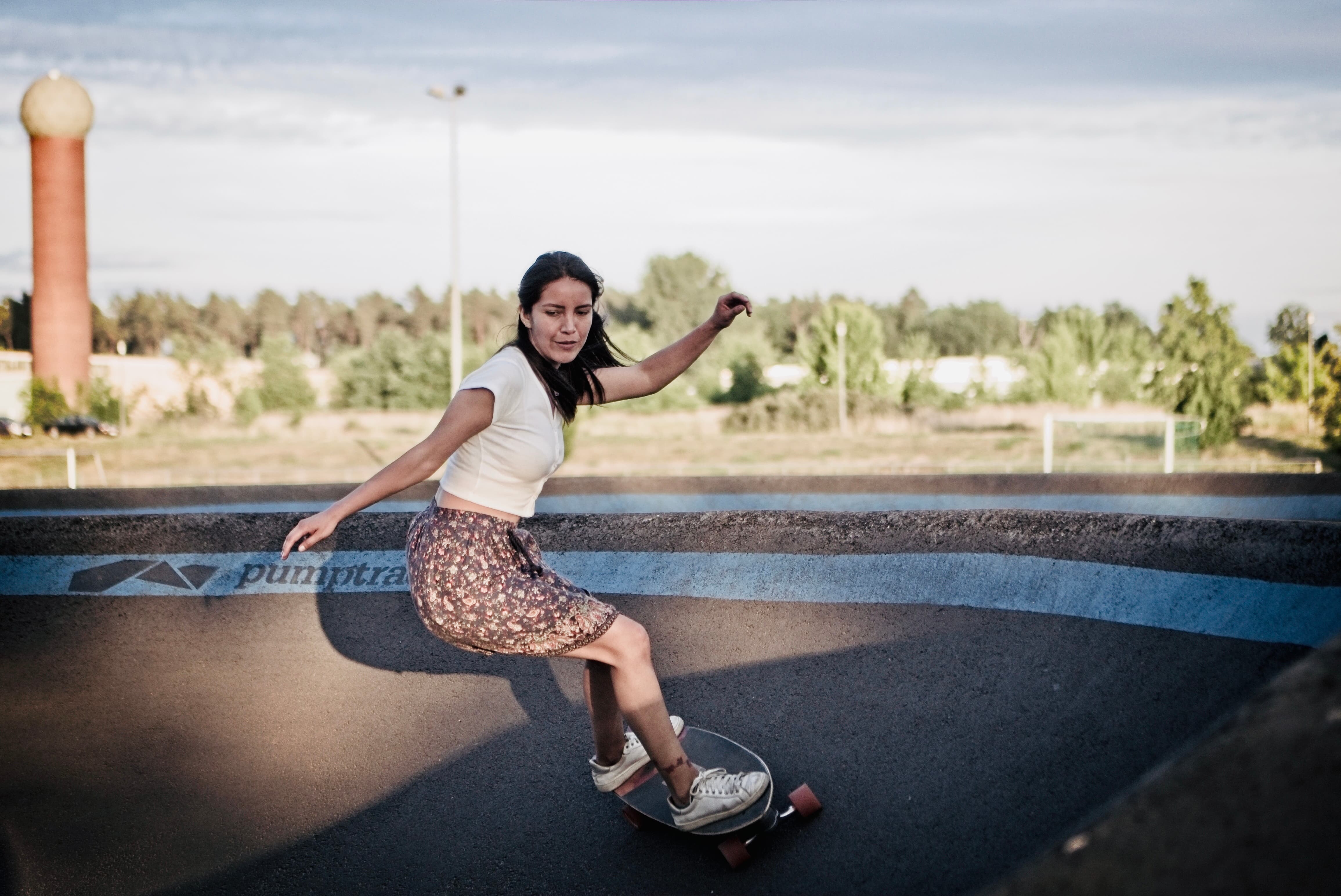
Conservation of energy
Energy = Kinetic energy + Potential energy
Energy can never be created or destroyed, it’s always conserved. However, it can be transformed. In our case, that means that you can transform kinetic energy into potential energy.
What is potential energy? Well, it’s stored energy that depends upon the relative position of various parts of a system.
What is kinetic energy? It just is the energy an object has because of its motion.
If you start at the top of the pump track, you’ll have a large amount of potential energy, because you start at the top. However, you’ll have zero kinetic energy, because you start at rest. In other words, the total energy at this point is the potential energy.
Once you roll down, you start to lose potential energy and increase kinetic energy. You’ll notice this because you’ll start to gain some speed. When you reach the bottom there is no potential energy left but there is a lot of kinetic energy in the form of high speed. This is perfect to go up to the next pump.
Friction
I can’t go up and down forever, I have to stop at some point, right? This is possible because some energy is lost due to friction between the wheels and the ground.
Since I can’t maintain the same amount of kinetic energy I’ll get less potential energy and I won’t be able to get too high anymore. Now I understand why at the beginning I wasn’t able to complete the circuit and I got stuck in the middle of a pump 😩 .
Angular Momentum
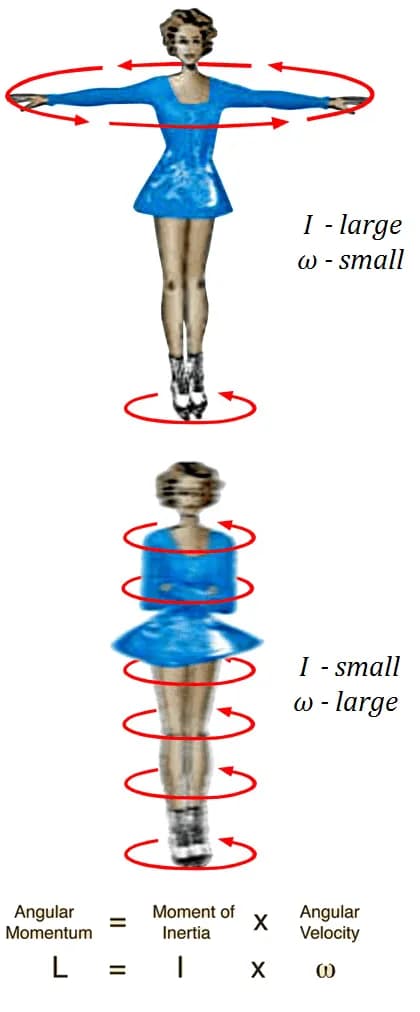
It’s the quantity of rotation of a body, which is (moment of inertia) * (angular velocity) 🤯 Fear not! Think about ice skaters spinning. They start with their arms close to their body while spinning but then end up at arm’s length. Did you notice that this changes the speed at which they spin? This is because the angular momentum must be conserved. In consequence, if the moment of inertia increases the angular velocity decreases to compensate and vice versa.
Ah yeah, before we continue, moment of inertia is the quantitative measure of a body that is undergoing rotational motion around a fixed axis.
It’s important to keep in mind that the moment of inertia increases with distance from the axis of rotation.
First, a fab ice skater is spinning on the tip of their skate with their arms extended. Then, their rate of spin increases greatly when they pull in their arms, decreasing their moment of inertia. The work they do to pull in their arms results in an increase in rotational kinetic energy.
You can see more in this video.
Going back to our pump track example, this concept is very useful to get especially high. In the pic below you can see that when I approach the next pump, I need to crouch down. Therefore, my center of mass (🔴 red dot ) moves farther away from the rotation axis (r1). This increases my moment of inertia✨ .
While I’m flying up the pump, I extend my body straight as far as I can shooting my hands up in the air 🙌 . This moves my center of mass up and closer to the rotation axis (r2). This decreases my moment of inertia.
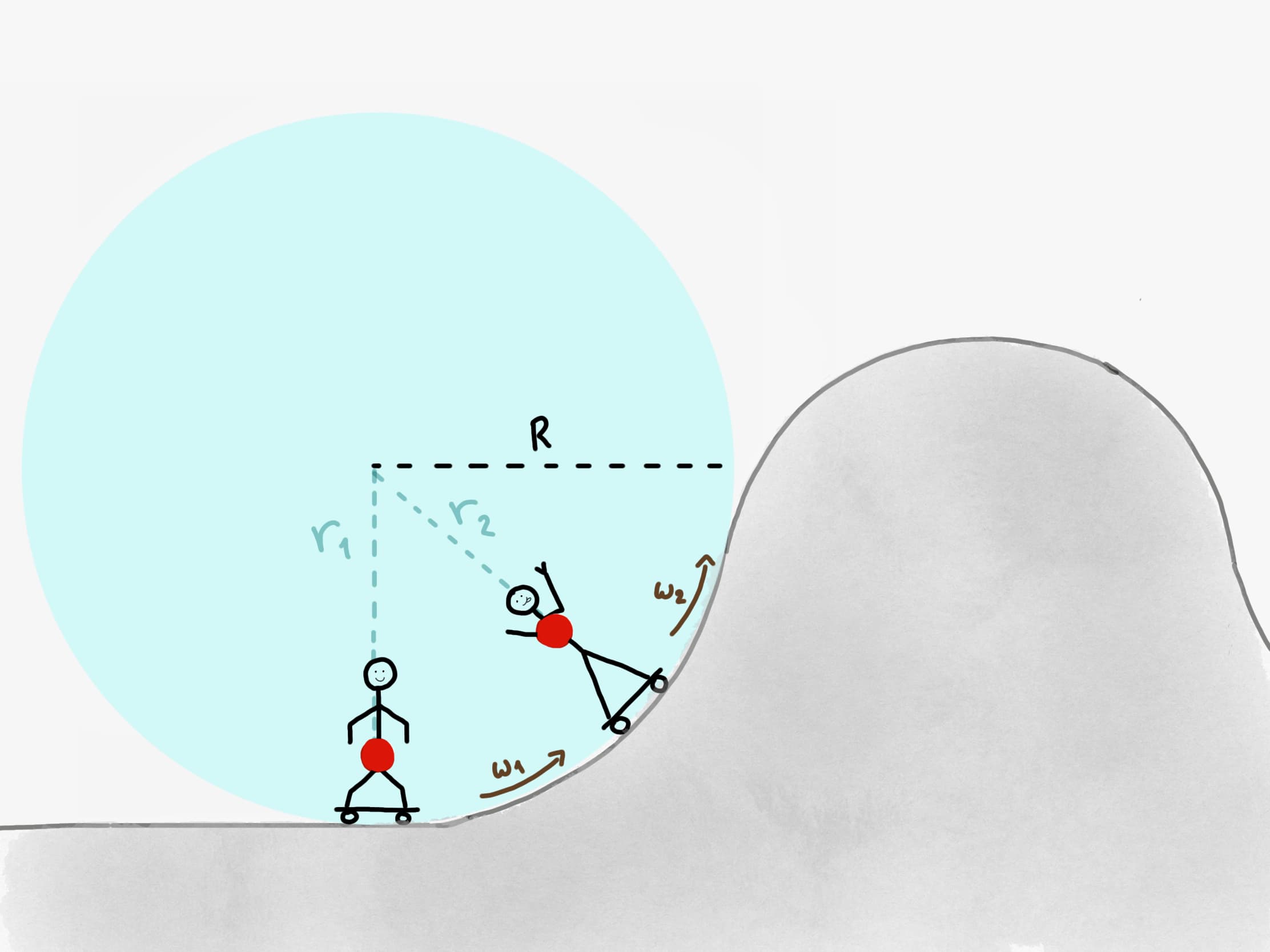
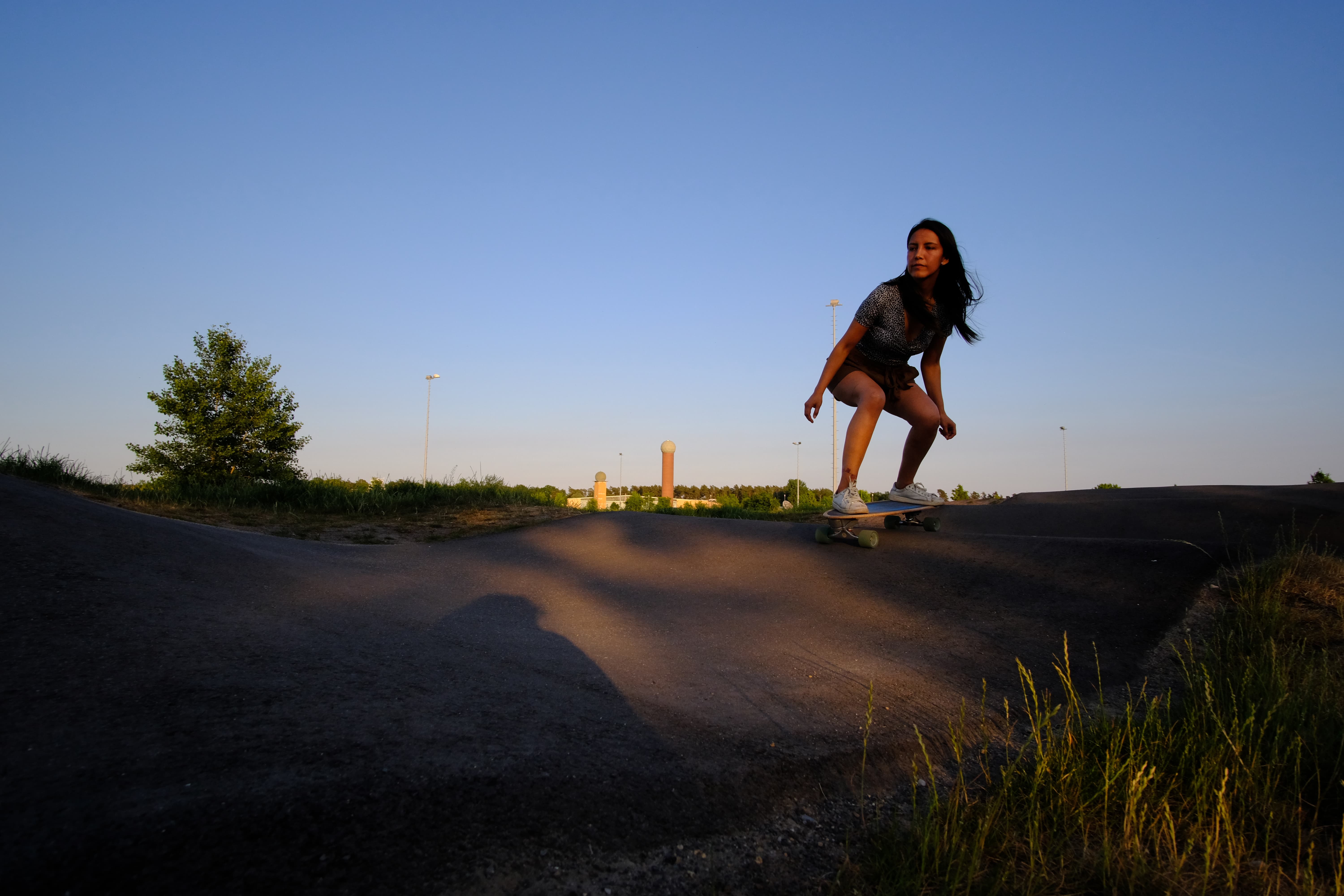
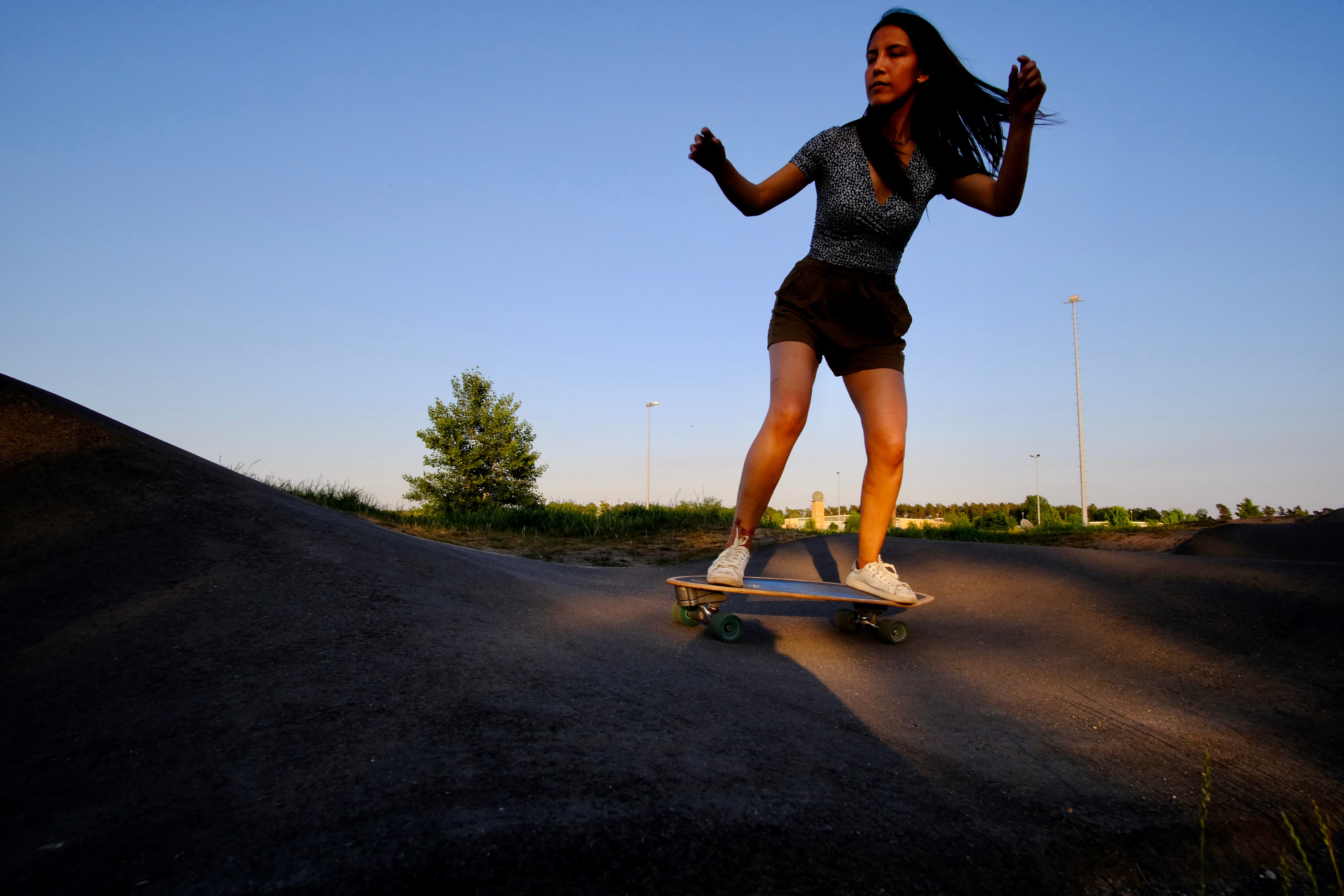
As mentioned before, the angular momentum must be conserved. If the moment of inertia decreases, my angular velocity must increase. This results in me having more speed as I hit the top than I would otherwise. I could potentially fly into the air and do some cool tricks at this point… but I’m scared.
To sum up, I can change my speed by first bending my knees and then extending them as I go up the pump. This, in the skater world, is well known as pumping.
Speed
If I keep pumping my body (again by crouching down and lifting my body and arms up in the curved position of the pump) I’m able to increase my velocity. As long as the energy gained from pumping is greater than the energy lost to friction, I can maintain or increase my speed on the track. This will help me reach the height I need.
Work
Work is defined as the amount of energy transferred when an object is moved over a distance by an external force.
When I lift my arms and body up, I feel resistance due to the force of centripetal acceleration. This force tends to push my body away from the center of rotation. This resistance is proof that work is being done and that energy is being added to the system.
Alright! That was fun, wasn’t it? I can’t wait to go to the pump track again and apply all that I learned while writing this article.
Oh! I almost forgot. Here is a cool website where you can emulate the skater’s journey and check the energy and speed over time.